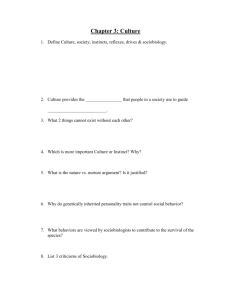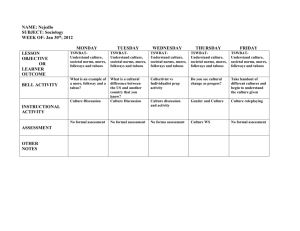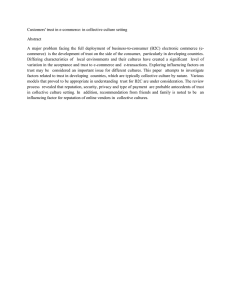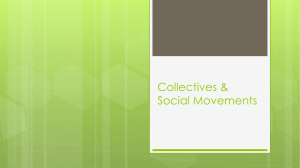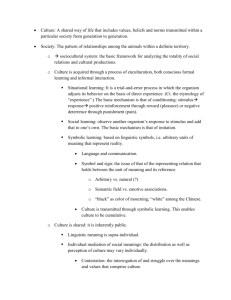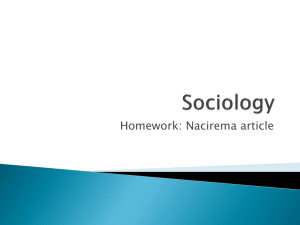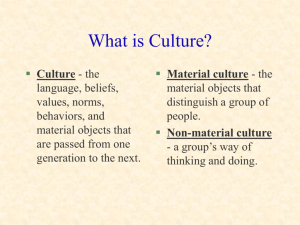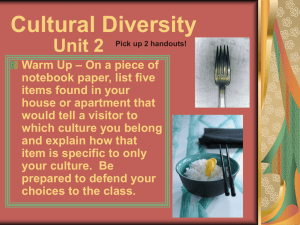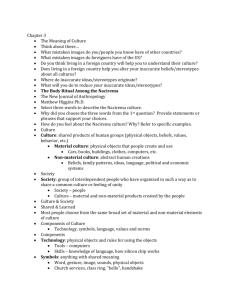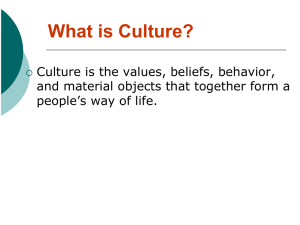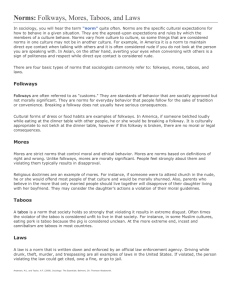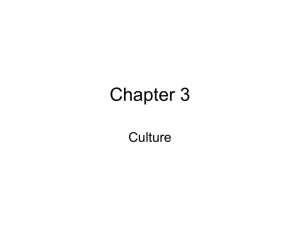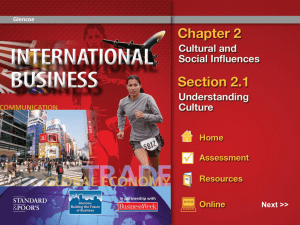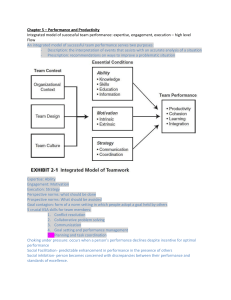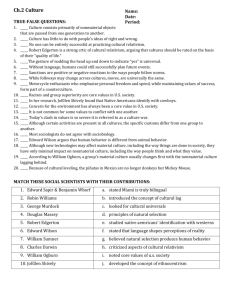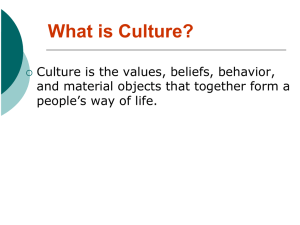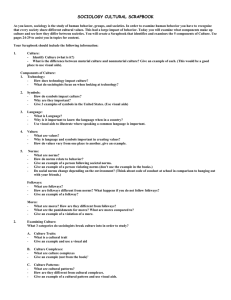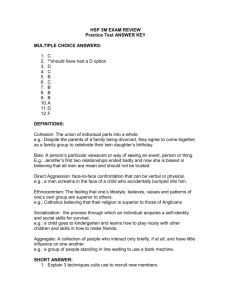The Sociological Perspective
advertisement
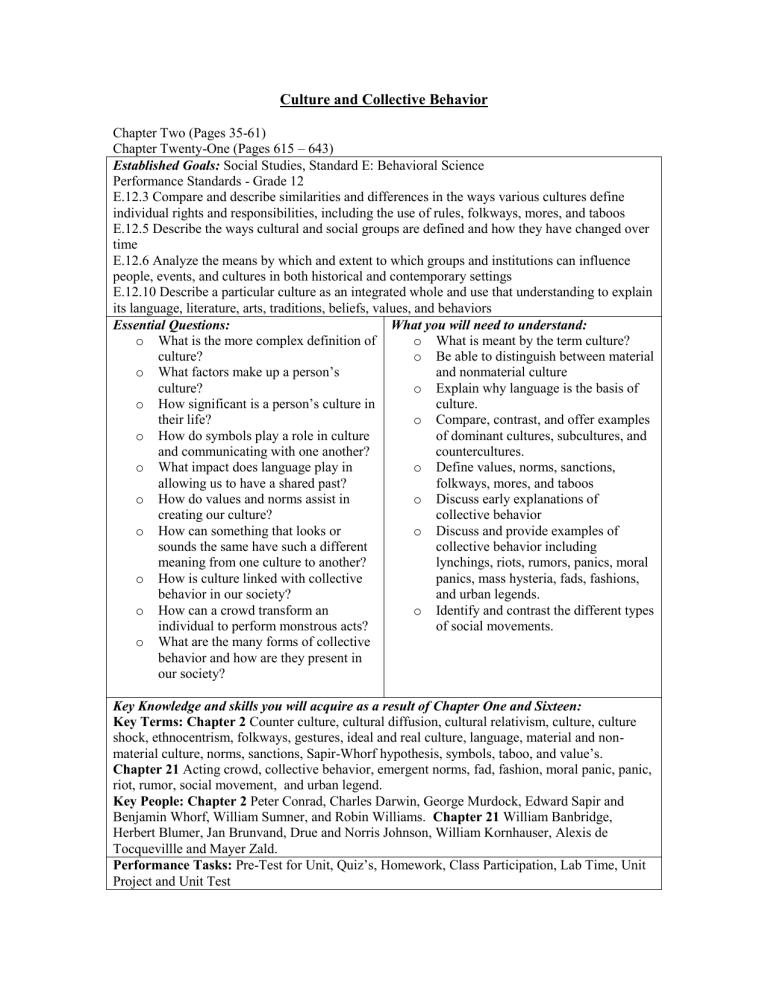
Culture and Collective Behavior Chapter Two (Pages 35-61) Chapter Twenty-One (Pages 615 – 643) Established Goals: Social Studies, Standard E: Behavioral Science Performance Standards - Grade 12 E.12.3 Compare and describe similarities and differences in the ways various cultures define individual rights and responsibilities, including the use of rules, folkways, mores, and taboos E.12.5 Describe the ways cultural and social groups are defined and how they have changed over time E.12.6 Analyze the means by which and extent to which groups and institutions can influence people, events, and cultures in both historical and contemporary settings E.12.10 Describe a particular culture as an integrated whole and use that understanding to explain its language, literature, arts, traditions, beliefs, values, and behaviors Essential Questions: What you will need to understand: o What is the more complex definition of o What is meant by the term culture? culture? o Be able to distinguish between material o What factors make up a person’s and nonmaterial culture culture? o Explain why language is the basis of o How significant is a person’s culture in culture. their life? o Compare, contrast, and offer examples o How do symbols play a role in culture of dominant cultures, subcultures, and and communicating with one another? countercultures. o What impact does language play in o Define values, norms, sanctions, allowing us to have a shared past? folkways, mores, and taboos o How do values and norms assist in o Discuss early explanations of creating our culture? collective behavior o How can something that looks or o Discuss and provide examples of sounds the same have such a different collective behavior including meaning from one culture to another? lynchings, riots, rumors, panics, moral o How is culture linked with collective panics, mass hysteria, fads, fashions, behavior in our society? and urban legends. o How can a crowd transform an o Identify and contrast the different types individual to perform monstrous acts? of social movements. o What are the many forms of collective behavior and how are they present in our society? Key Knowledge and skills you will acquire as a result of Chapter One and Sixteen: Key Terms: Chapter 2 Counter culture, cultural diffusion, cultural relativism, culture, culture shock, ethnocentrism, folkways, gestures, ideal and real culture, language, material and nonmaterial culture, norms, sanctions, Sapir-Whorf hypothesis, symbols, taboo, and value’s. Chapter 21 Acting crowd, collective behavior, emergent norms, fad, fashion, moral panic, panic, riot, rumor, social movement, and urban legend. Key People: Chapter 2 Peter Conrad, Charles Darwin, George Murdock, Edward Sapir and Benjamin Whorf, William Sumner, and Robin Williams. Chapter 21 William Banbridge, Herbert Blumer, Jan Brunvand, Drue and Norris Johnson, William Kornhauser, Alexis de Tocquevillle and Mayer Zald. Performance Tasks: Pre-Test for Unit, Quiz’s, Homework, Class Participation, Lab Time, Unit Project and Unit Test
